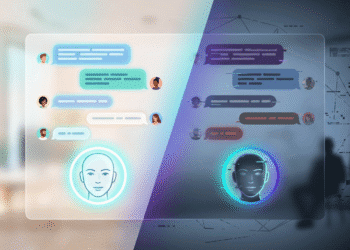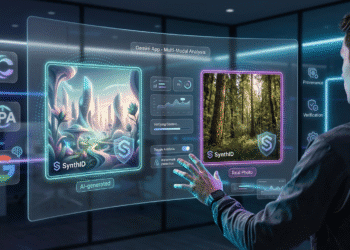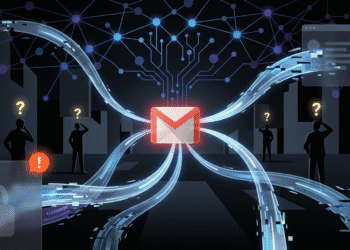The landscape of video production has fundamentally shifted. What once required expensive equipment, multiple software subscriptions, and countless hours of asset hunting across various platforms can now be accomplished within a single ecosystem. I recently put this theory to the test by creating an entire cinematic marketing video using only Artlist, and the results were genuinely surprising.
This wasn’t just a simple video mashup. I’m talking about a complete commercial production—storyline development, AI-generated visuals, sound design, music composition, and professional transitions—all created without touching stock websites, downloading from YouTube, or juggling multiple AI tools. Everything happened inside Artlist, with Adobe Premiere Pro serving as the assembly platform.
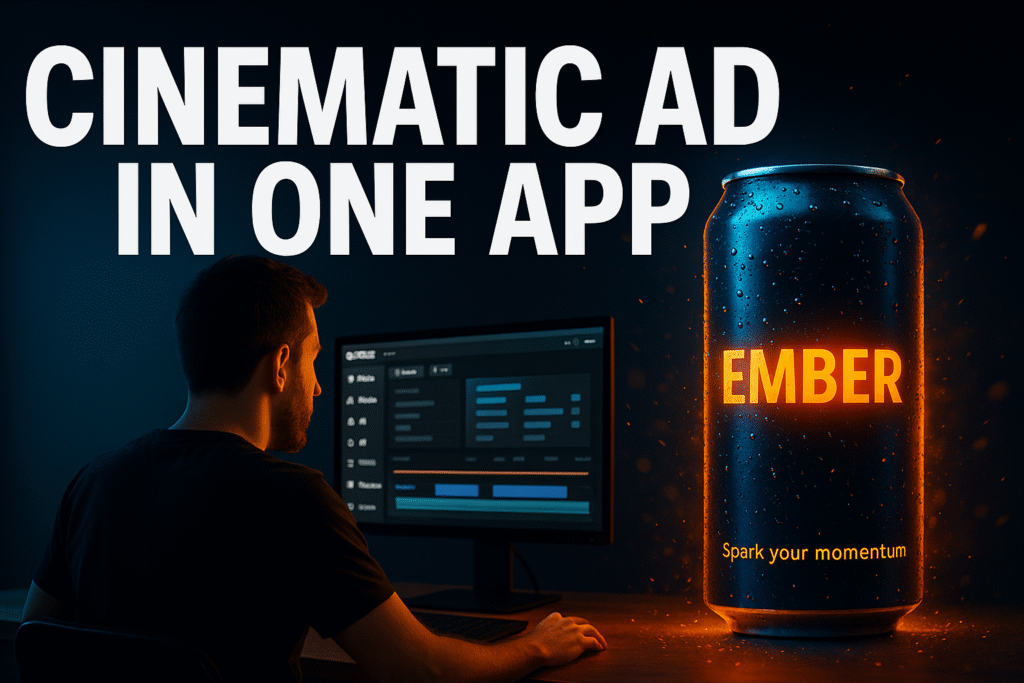
The Evolution of All-in-One Creative Platforms
The creative industry has long suffered from platform fragmentation. Videographers and content creators typically maintain subscriptions to separate services for stock footage, music licensing, sound effects, and now AI generation tools. This fragmented approach doesn’t just drain budgets—it fragments creative flow. Every platform switch represents a context shift, a login screen, a different interface to navigate.
Artlist has positioned itself as a solution to this fragmentation problem. The platform has evolved beyond its original music licensing roots to incorporate AI video generation, image creation, voiceover capabilities, and a comprehensive creative assets library. But does consolidation compromise quality? That’s what I wanted to discover.
Conceptualizing the Project: Ember Energy Drink
For this experiment, I needed a concept that would genuinely test the platform’s capabilities. I decided to create a fictional beverage commercial for a product called “Ember” with the tagline “Spark Your Momentum.” The aesthetic direction was deliberately challenging: dark, neon-infused, high-energy visuals that would require precise control over lighting, color grading, and atmospheric elements.
The commercial structure followed a classic four-scene narrative arc. First, a mystery close-up establishing the product in an atmospheric environment. Second, the satisfying moment of cracking open the beverage container with dramatic energy effects. Third, a model taking a sip, connecting the product to human experience. Finally, a clean closing shot with text overlay delivering the brand message.
This structure isn’t arbitrary. It follows proven advertising psychology—intrigue, action, connection, and message retention. If Artlist’s tools could deliver on this framework, they could handle most commercial video projects.
Navigating Artlist’s AI Video Generation Tools
After signing up through Artlist’s platform, the interface immediately presents its consolidated approach. The left sidebar organizes everything: Video AI, Image AI, Voiceover, Music, and Creative Assets. What immediately stood out was the “Featured AI Models” section, which reads like a who’s-who of current AI video generation technology.
The platform includes access to Sora 2 Pro, Kling 1.6, Kling 2.5 Turbo, Luma 3.1, Nano Banana Pro, and several other cutting-edge models. This matters more than it might initially appear. In the rapidly evolving AI video space, having access to multiple models means you’re not locked into one company’s approach or limitations. Different models excel at different tasks—some handle motion better, others produce more photorealistic textures, and some offer superior prompt adherence.
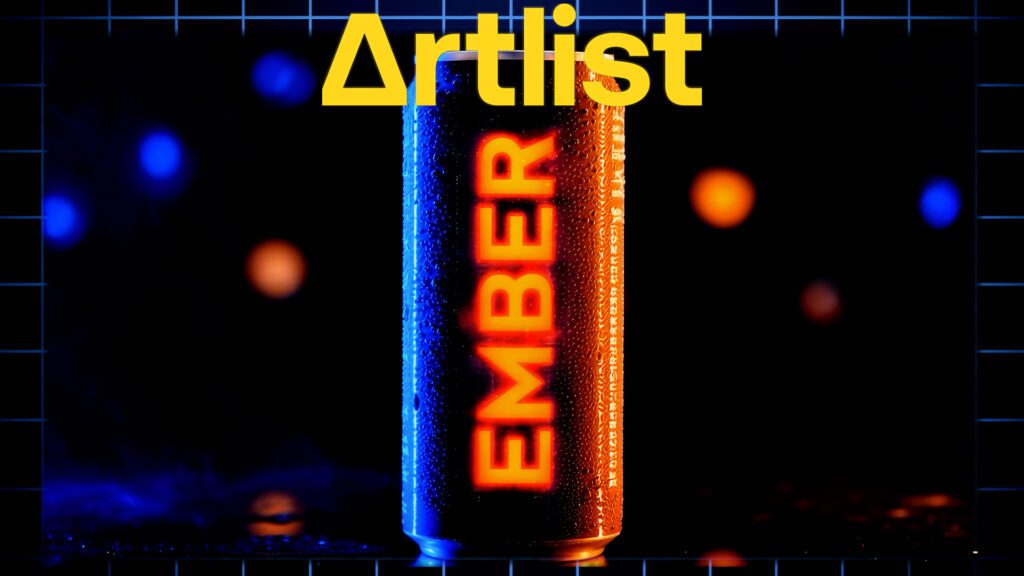
Crafting the First Scene: The Power of Detailed Prompting
For the opening mystery shot, I selected Sora 2 Pro, configured for 16:9 aspect ratio, five-second duration, and full HD resolution with audio included. The prompt engineering here became crucial. Generic prompts produce generic results, so I went extremely detailed:
“Cinematic close-up of the Ember can, rotating slowly in a dark neon environment with blue and orange reflections on metal, dramatic rim lighting, tiny drifting particles, shallow depth of field, macro condensation droplets.”
This level of specificity serves multiple purposes. It guides the AI toward a particular aesthetic while also establishing technical parameters like depth of field and lighting direction. The mention of “tiny drifting particles” and “macro condensation droplets” adds layers of visual interest that transform a simple product shot into something atmospheric and premium.
The output exceeded expectations. The generated video featured the Ember can with glowing text on its surface, rotating smoothly against a dark background with precisely the neon color palette I’d specified. The condensation droplets caught light realistically, and the shallow depth of field created that coveted cinematic quality that typically requires expensive camera equipment and skilled cinematography.
Maintaining Visual Consistency Across Scenes
One of the most challenging aspects of AI video generation is maintaining consistency across multiple shots. When you’re generating scenes independently, you risk creating a disjointed final product where the product, lighting, or style shifts noticeably between cuts.
My solution involved using Artlist’s image-to-video feature. After generating the first scene, I took a screenshot of the Ember can as a reference image. For subsequent scenes, I uploaded this reference image and used it as the foundation for new generations. This approach essentially told the AI, “Keep this exact product design, but show it in a different context.”
For the second scene—the can-opening moment—I crafted another detailed prompt: “Extreme cinematic moment opening the Ember can in slow motion. The can cracks open and there’s a burst of neon orange energy, light and ember particles.” I explicitly specified that “the can must be identical in every scene” and provided additional descriptive details about the product’s appearance.
This technique proved remarkably effective. The can maintained its visual identity across all four scenes while the action and context evolved. This consistency is what separates amateur content from professional advertising—viewers may not consciously notice consistency, but they definitely notice when it’s absent.
The Assembly Process: Bringing Scenes Together
With all four AI-generated scenes completed—the rotating can, the opening burst, the model taking a sip, and the final brand shot—I moved into Adobe Premiere Pro for assembly. The raw footage already looked impressive, but it lacked the cohesion that transforms individual clips into a narrative.
The initial assembly was straightforward: drag each clip into the timeline in sequence. Playing through this rough cut revealed the bones of something compelling, but it felt mechanical. The transitions were abrupt, there was no audio beyond the AI-generated ambient sound, and nothing guided the viewer’s emotional journey through the piece.
This is where Artlist’s integration with professional editing software becomes genuinely valuable. Rather than leaving the platform to hunt for music and sound effects elsewhere, everything remained accessible within the workflow.
Leveraging the Artlist Library Extension
Artlist offers a library extension that integrates directly into Premiere Pro, After Effects, Final Cut Pro, and DaVinci Resolve. This isn’t just a convenience feature—it fundamentally changes the creative process. Instead of interrupting your editing flow to search external libraries, preview files, download them, and import them into your project, the entire Artlist catalog becomes searchable within your editing interface.
I accessed this through Premiere Pro’s Window menu, selecting Extensions and then the Artlist Library. The interface appeared as a panel within my workspace, maintaining my timeline view while providing search and preview capabilities.
For music, I searched for “cinematic epic” tracks. The platform returned numerous options, each with preview functionality. I could scrub through tracks, hearing how they built and evolved, without leaving my editing environment. I selected a track with dramatic percussion hits and rising tension that matched the energy of the visuals.
The music integration went beyond simple background audio. I duplicated the track, offset it slightly, and adjusted levels to create a layered, more complex soundscape. This technique, common in professional audio mixing, adds depth and prevents the music from feeling like a simple backing track.
Adding Professional Polish with Creative Assets
Artlist’s Creative Assets library includes templates, LUTs (color grading presets), stock footage, sound effects, and transitions. For this project, I focused on transitions and sound effects to elevate the production value.
I searched for “light transitions” and found a pack of subtle light leak effects. These transitions are compatible with multiple editing platforms and require no plugins—they’re simply drag-and-drop assets. I downloaded the Premiere Pro version, which opened as its own project file containing multiple transition options.
The implementation required some technical finesse. After dragging the transition into my timeline between the first and second scenes, I needed to change the blend mode to “Screen” to achieve the proper light leak effect. I then added subtle position keyframes to create a gentle drift, making the transition feel organic rather than static.
I replicated this approach between subsequent scenes, adjusting timing and intensity to match the pacing. For the final scene, I added a dip to black, creating a definitive ending point.
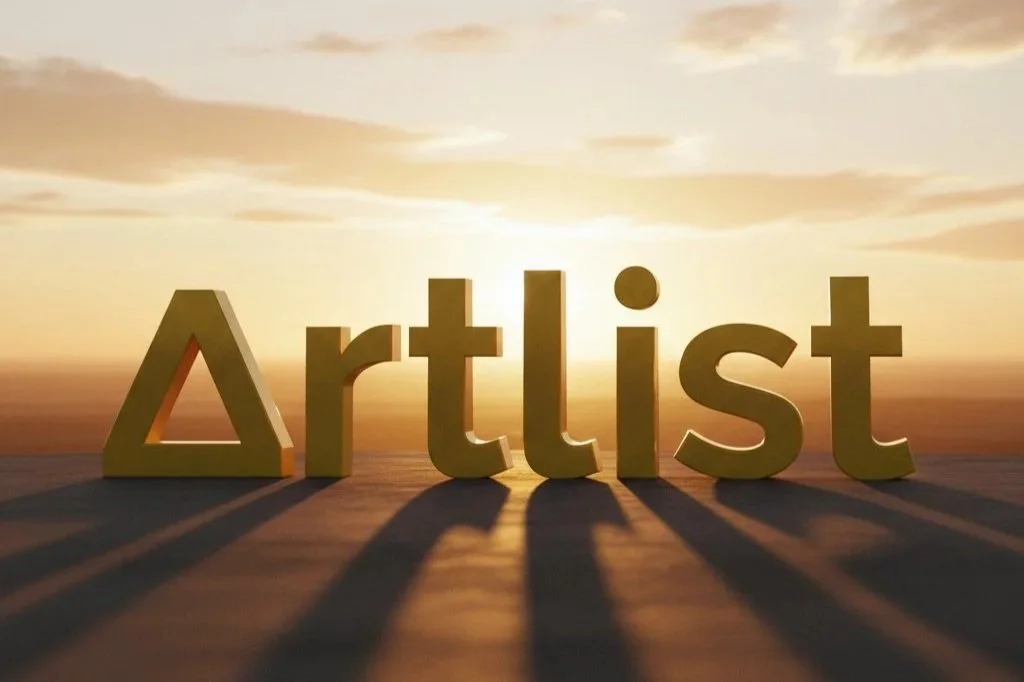
Sound Design: The Invisible Half of Video
Visual content dominates discussions about video production, but sound design often determines whether a video feels amateur or professional. I returned to the Artlist library within Premiere Pro to search for sound effects.
For the opening scene, I selected a camera shutter sound—a subtle audio cue that subconsciously signals “this is professional photography” to viewers. For the can-opening scene, I searched for “intense transition” sounds and found a dramatic whoosh effect that emphasized the burst of energy in the visual.
These sound effects were precisely timed to match visual events. The shutter sound hit exactly as the can came into focus. The whoosh synchronized with the burst of particles as the can opened. This synchronization between audio and visual elements creates a sense of impact and intentionality that passive viewing doesn’t consciously register but definitely feels.
The Final Product: Evaluating the Results
After adding transitions, music, and sound effects, I unmuted all tracks and played through the complete commercial. The transformation from the initial rough cut was substantial. What began as four disconnected AI-generated clips had evolved into a cohesive 15-second commercial with professional pacing, emotional arc, and brand messaging.
The opening mystery shot drew viewers in with its atmospheric lighting and slow reveal. The can-opening moment provided a satisfying action beat with synchronized sound and visual effects. The model taking a sip created human connection with the product. The final shot delivered the brand name and tagline with clean typography against a complementary background.
Most importantly, the entire piece maintained visual consistency. The Ember can looked identical across all scenes, the color palette remained cohesive, and the neon-dark aesthetic persisted throughout. This consistency is what allows viewers to focus on the narrative rather than being distracted by jarring visual shifts.
The Broader Implications for Content Creation
This experiment revealed something significant about the current state of creative tools. The consolidation of AI generation, asset libraries, and workflow integration within a single platform doesn’t just save time—it fundamentally changes the creative process.
Traditional video production involves constant context switching. You conceptualize in one environment, generate or source assets in another, edit in a third, and often return to previous steps when you discover gaps in your asset collection. Each transition represents friction—time spent navigating interfaces, managing files, and maintaining mental models of different systems.
The consolidated approach eliminates much of this friction. When I needed a transition, I searched within my editing environment. When I wanted to test a different music track, I previewed it without leaving my timeline. When I needed to generate an additional scene, I accessed the AI tools through the same platform that housed my other assets.
This isn’t just about convenience. Reduced friction means more iterations. More iterations mean better final products. When testing a different music track requires 30 seconds instead of five minutes, you’re more likely to experiment. When adding a transition is immediately accessible rather than requiring a trip to another website, you’re more likely to enhance your edit.
Limitations and Considerations
No platform is perfect, and honest evaluation requires acknowledging limitations. While Artlist’s AI video generation produced impressive results, it still carries the inherent limitations of current AI video technology. Complex human movements can appear slightly unnatural. Text generation within scenes remains unreliable. Extreme camera movements sometimes produce artifacts.
The platform’s strength lies in its breadth rather than depth in any single category. Dedicated AI video platforms might offer more granular control over specific parameters. Specialized music libraries might have deeper catalogs in niche genres. Professional sound design libraries might offer more extensive foley collections.
The question becomes whether consolidation’s benefits outweigh specialization’s advantages. For many creators—particularly those working on tight timelines or budgets—the answer appears to be yes. The ability to complete an entire project within a single ecosystem, with a single subscription, represents substantial value.
Practical Applications Beyond Advertising
While I created a beverage commercial for this experiment, the workflow applies to numerous content types. Social media content creators could use this approach for product showcases, brand storytelling, or educational content. Small businesses could produce professional marketing materials without hiring agencies. Freelance videographers could rapidly prototype concepts for client approval.
The accessibility of these tools also democratizes production quality. What once required expensive equipment, specialized skills, and significant time investment can now be accomplished by individuals with creative vision and basic editing knowledge. This democratization doesn’t eliminate the value of professional expertise—skilled creators will always produce superior results—but it does lower the barrier to entry for competent content creation.
The Future of Integrated Creative Platforms
Artlist’s approach represents a broader trend in creative software: the movement toward integrated ecosystems that handle multiple aspects of the creative process. Adobe’s Creative Cloud pioneered this model for traditional creative tools. Canva has done something similar for graphic design. Now platforms like Artlist are extending this integration into AI-powered content generation.
The trajectory seems clear. As AI capabilities continue advancing, the distinction between “generating” and “editing” content will blur. Future platforms will likely offer even tighter integration, where AI assists not just in creating individual assets but in understanding project context, suggesting improvements, and automating repetitive tasks.
The creators who thrive in this environment will be those who understand both the capabilities and limitations of these tools. Technical proficiency matters less than creative vision and the ability to effectively communicate that vision through detailed prompts and thoughtful editing choices.
Conclusion: Efficiency Meets Creativity
Building a complete cinematic commercial using only Artlist proved not just possible but surprisingly efficient. The entire process—from concept to final export—took a fraction of the time traditional production would require, with results that genuinely compete with professionally produced content.
The key insight isn’t that AI tools can replace human creativity. Rather, it’s that consolidated platforms can eliminate the friction that prevents creative ideas from becoming realized projects. When the gap between concept and execution narrows, more ideas become viable. More experiments become possible. More creators can participate in producing professional-quality content.
For anyone working in video production, content creation, or digital marketing, platforms like Artlist represent a significant shift in what’s possible with limited resources. The question is no longer whether you can produce professional content without a full production team—it’s whether you’re willing to learn the new skills required to leverage these integrated creative ecosystems effectively.
The future of content creation isn’t about choosing between human creativity and AI capabilities. It’s about understanding how to combine them within workflows that minimize friction and maximize creative iteration. That future is already here, accessible through platforms that consolidate the tools, assets, and capabilities that once required juggling multiple subscriptions and services.


